In a bold move to bridge the gap between traditional finance and the burgeoning world of digital assets, Circle Internet Financial, the issuer of the USD Coin (USDC) stablecoin, has applied for a national trust bank charter with the U.S. Office of the Comptroller of the Currency (OCC). Announced on June 30, 2025, this strategic step aims to allow Circle to directly manage the reserves backing USDC and expand its custodial services for tokenized financial instruments. If approved, the new entity, dubbed First National Digital Currency Bank, N.A., could reshape the stablecoin landscape and further legitimize cryptocurrencies in the global financial system. Here’s a deep dive into what this means for Circle, USDC, and the broader crypto ecosystem.
Why a National Trust Bank Charter?
Circle’s pursuit of a national trust bank license is a calculated effort to enhance the trust, transparency, and regulatory compliance surrounding USDC, the second-largest stablecoin by market capitalization. Unlike a traditional bank, a trust bank under this charter would not accept deposits or issue loans. Instead, it would focus on custody services, allowing Circle to directly manage USDC reserves—currently held in cash and short-term U.S. Treasuries—and offer institutional clients custody for tokenized assets like stocks and bonds.
This move aligns with Circle’s long-standing commitment to regulatory compliance. As CEO Jeremy Allaire noted, “Circle has long sought to seek the highest standards of trust, transparency, governance, and compliance.” By securing a federal charter, Circle would operate under the oversight of the OCC, gaining direct access to the Federal Reserve’s payment systems. This could eliminate the need for intermediary banks, streamlining USDC’s integration into the traditional financial infrastructure.
The Significance for USDC
USDC, pegged 1:1 to the U.S. dollar, is backed by highly liquid reserves, primarily managed by BlackRock and custodied by The Bank of New York Mellon. As of December 2024, USDC had $41 billion in assets under management, with a circulation reaching $55 billion in July 2022. The stablecoin’s reserves are held in segregated accounts, consisting of approximately 80% short-dated U.S. Treasuries and 20% cash deposits at global systemically important banks (GSIBs) to ensure liquidity and stability.
By obtaining a trust bank charter, Circle would take direct control of these reserves, reducing reliance on third-party custodians like BlackRock and BNY Mellon while maintaining partnerships with major banks for portions of its holdings. This shift could enhance operational efficiency and reinforce USDC’s position as a trusted digital dollar, especially as stablecoin legislation, such as the proposed GENIUS Act, advances in Congress. The legislation, expected to be signed into law by President Trump, would mandate liquid asset backing and monthly reserve disclosures, further aligning with Circle’s transparency-first approach
Bridging Traditional Finance and Crypto
Circle’s application comes at a pivotal moment for the crypto industry. Stablecoins like USDC are increasingly seen as a bridge between traditional finance and decentralized digital assets. With USDC supported on 23 blockchain networks and integrated into 600 million wallets across 185 countries, its use cases span payments, remittances, decentralized finance (DeFi), and cross-border settlements. The trust bank charter would enable Circle to custody tokenized versions of traditional financial instruments, such as stocks and bonds, expanding its role in the tokenization of real-world assets—a growing trend in digital finance.
This move could also catalyze institutional adoption. Posts on X reflect optimism about the license’s potential to “legitimize $USDC further, boosting institutional adoption and regulatory compliance” and strengthen market stability for stablecoins. By operating as a federally regulated entity, Circle could attract more banks, fintechs, and corporations to integrate USDC into their operations, reinforcing its position as a competitor to Tether (USDT), which it surpassed in transaction volume in August 2024
Challenges and Risks
While the trust bank charter offers significant opportunities, it’s not without challenges. The application process with the OCC is rigorous, and approval is not guaranteed. Anchorage Digital remains the only crypto company with a national trust bank license, highlighting the regulatory hurdles Circle faces. Additionally, Circle’s revenue model, which relies heavily on interest from reserve assets like U.S. Treasuries, is sensitive to Federal Reserve policy changes. A drop in interest rates could impact profitability unless offset by expanded USDC circulation or new services like custody and compliance tools.
Past incidents also underscore the importance of robust reserve management. In March 2023, USDC temporarily lost its dollar peg when $3.3 billion of its reserves were tied up in the collapse of Silicon Valley Bank. Circle mitigated the crisis by shifting cash reserves to GSIBs and reinforcing its commitment to transparency through monthly attestations by firms like Grant Thornton and Deloitte. A trust bank charter could further insulate USDC from such risks by enabling direct reserve management and reducing reliance on external banking partners
The Bigger Picture
Circle’s application is a milestone in the maturation of the crypto industry. As stablecoins gain traction—evidenced by partnerships with global players like Visa, Mastercard, and MoneyGram—regulatory clarity is critical. The GENIUS Act and Circle’s proactive regulatory engagement signal a shift toward a more structured and trusted digital asset ecosystem. If approved, the First National Digital Currency Bank could set a precedent for other crypto firms, paving the way for greater integration of stablecoins into mainstream finance.
Moreover, Circle’s move reflects a broader trend of crypto companies seeking legitimacy through established financial frameworks. With a market cap of approximately $44 billion post-IPO and bullish analyst ratings from firms like Barclays and Bernstein, Circle is well-positioned to lead this charge. Its history of regulatory firsts—such as securing the NYDFS BitLicense in 2015 and complying with the EU’s Markets in Crypto-Assets (MiCA) regulation in 2024—underscores its commitment to operating within regulated frameworks.
Conclusion
Circle’s pursuit of a U.S. national trust bank charter is a transformative step for USDC and the stablecoin industry. By seeking to directly manage USDC reserves and offer custody for tokenized assets, Circle is positioning itself as a linchpin in the convergence of traditional and digital finance. While challenges remain, including regulatory approval and economic dependencies, the potential rewards are immense: enhanced trust, broader adoption, and a stronger foothold in the global financial system. As the crypto landscape evolves, Circle’s bold move could redefine how stablecoins power the future of money.For more details on Circle’s regulatory journey and USDC’s role in digital finance, visit Circle’s official website or follow updates on X
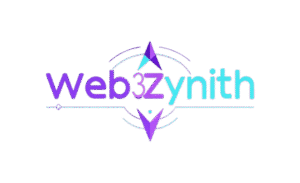




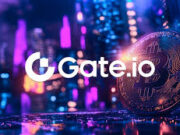

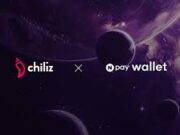



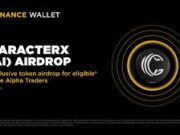



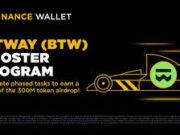




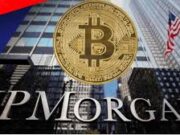
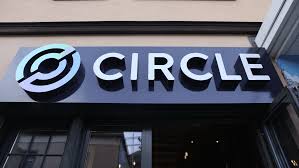






Will it make USDC less “crypto” and more like boring bank money?
Applying for a trust bank charter after that $18B IPO? They’re playing 4D chess.
how’s this different from what they’re doing now with BlackRock?
Circle’s out here trying to be the gold standard for stablecoins!
Whoa, Circle going for a U.S. banking license?
Massive deal for USDC! If they pull this off